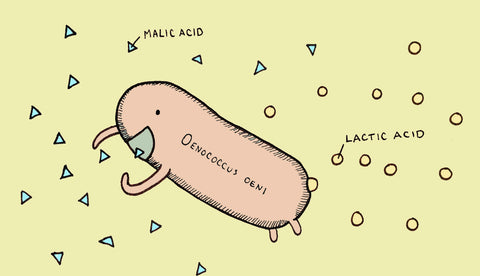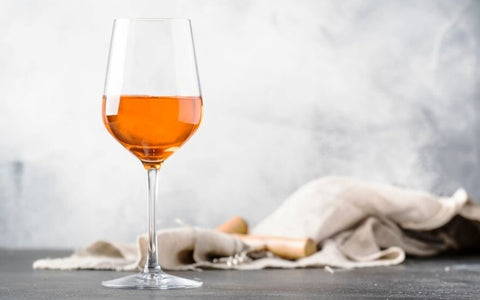How White Wine is Made: A Step-by-Step Guide

White wine holds a special place in the world of winemaking, celebrated for its fresh, vibrant, and aromatic flavors. But have you ever wondered how white wine is made and what makes it so different from red wine?
In this guide, we’ll walk you through the 11 essential steps of white winemaking, offering insights into the techniques and decisions that influence every glass.
Step 1: Harvest the Grapes
White wine can be made from both white and red grape varieties. The key difference is that, during white winemaking, the grape skins are removed before fermentation, preventing the wine from taking on color.
Harvest Considerations:
- Timing is Everything: Grapes must be picked at peak ripeness to balance acidity and sugar.
- Cool Temperatures: Harvesting in the early morning or late evening preserves the grapes’ freshness and prevents premature fermentation.
Popular white wine grapes include Chardonnay, Sauvignon Blanc, and Riesling.
Learn more about grape varieties in our guide: Top White Wine Grape Varieties.
Step 2: Press the Grapes
Once harvested, grapes head straight to the winery to be pressed. A pneumatic press gently extracts juice while minimizing contact with the grape skins.
- Sulfur Dioxide (SO₂): Added to prevent bacterial spoilage and oxidation.
Curious about sulfites in wine? Read our guide: Are Sulfites in Wine Bad for You?.
Step 3: Let the Juice Settle
The freshly pressed juice is transferred to a tank to settle and chill. This step allows solid particles (like stems and skin fragments) to sink to the bottom.
Why Settling is Important:
- Removes bitter-tasting solids.
- Ensures cleaner, brighter flavors in the final wine.
Step 4: Add Yeast to Start Fermentation
Yeast is added to the juice to begin alcoholic fermentation, where sugars are converted into alcohol and CO₂.
Yeast Choices:
- Commercial Yeast: Provides consistency and predictability.
- Wild (Natural) Yeast: Adds complexity and a sense of terroir but comes with less control.
Learn about different yeast types in our guide: Wine Fermentation Techniques.
Step 5: Alcoholic Fermentation
White wine ferments at cooler temperatures (10–15°C / 50–59°F) compared to red wine. This preserves delicate floral and fruity aromas.
Key Facts About Fermentation:
- Oxygen exposure is minimized to protect freshness.
- Sweetness levels are controlled by halting fermentation early if desired.
The remaining sugar is known as residual sugar, which defines whether a wine is dry, off-dry, or sweet.
Explore how fermentation shapes wine in our guide: Understanding Wine Acidity.
Step 6: Malolactic Fermentation (Optional)
Not all white wines go through Malolactic Fermentation (MLF), but when they do, it creates creamy, buttery flavors.
How MLF Works:
- Sharp malic acid (think green apples) is converted into smooth lactic acid (think yogurt).
- Common in wines like Chardonnay for their signature buttery texture.
Discover more in our guide: What is Malolactic Fermentation?.
Step 7: Stir the Lees
After fermentation, white wine often rests on its lees (dead yeast particles). Winemakers may stir the lees periodically in a process called bâtonnage.
Benefits of Lees Stirring:
- Adds texture and richness.
- Enhances flavors, creating subtle bready or nutty notes.
Learn about lees aging in our guide: The Role of Lees in Winemaking.
Step 8: Blending the Wine
Once the wine has aged appropriately, winemakers may choose to blend different tanks or barrels to create the final wine.
Blending Goals:
- Achieve balance in flavor, aroma, and texture.
- Combine different grape varieties for complexity.
Some of the world’s most famous wines are blends, such as Sémillon-Sauvignon Blanc.
Step 9: Clarifying the Wine
At this stage, the wine is still cloudy and may contain suspended particles. Winemakers clarify the wine using fining agents like:
- Bentonite Clay (vegan-friendly)
- Egg Whites
- Casein (milk protein)
The wine may also be filtered to prevent bacterial spoilage.
Learn about the final touches in our guide: Wine Fining and Filtering Explained.
Step 10: Bottling and Labeling
The clarified wine is carefully bottled with minimal oxygen exposure to preserve freshness. A small amount of sulfur dioxide (SO₂) may be added to prevent oxidation.
The bottles are then corked, labeled, and prepared for market.
Step 11: Ready for Market
Unlike many red wines, most white wines are released shortly after bottling to retain their fresh, vibrant flavours.
However, certain premium white wines—like aged Chardonnay or Riesling—can benefit from additional bottle aging, developing richer and more complex characteristics over time.
The Takeaway: The Art of White Winemaking
The journey of white wine, from vineyard to bottle, is a meticulous process that balances science and art. Every step influences the final flavour, aroma, and texture of the wine in your glass.
At McLaren Vale Cellars, we take pride in offering exceptional white wines crafted with precision and passion.
Explore our curated collection of white wines here.
Further Reading:
Here’s to discovering the elegance and craft behind every bottle of white wine—cheers! 🍷✨




Comments (0)
There are no comments for this article. Be the first one to leave a message!